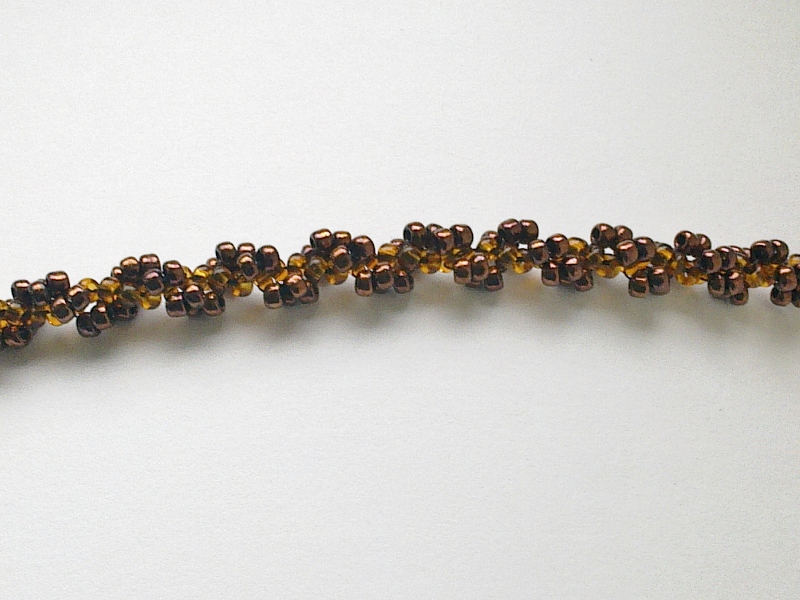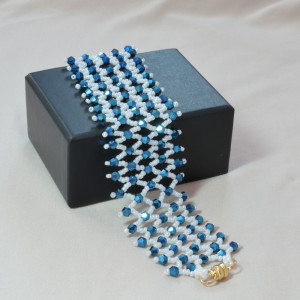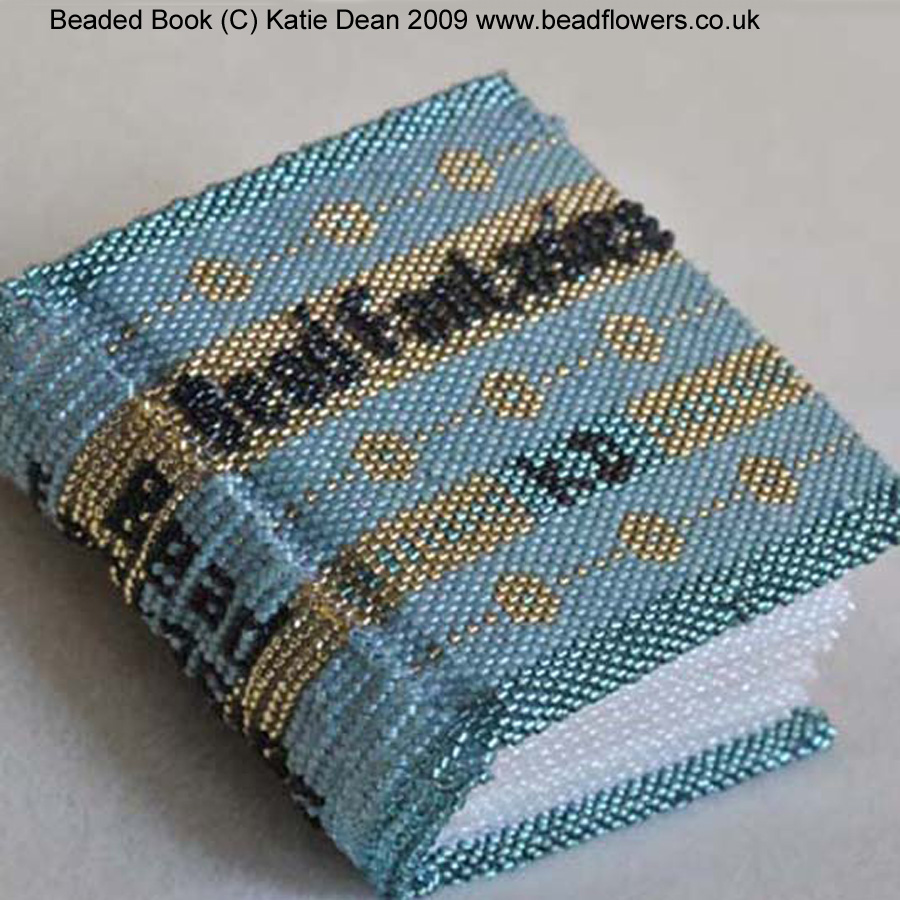Photographing Beadwork for Competitions
I was recently invited to adjudicate a beading competition run by my good friend, Erika Sandor (The Story-Telling Jeweller). The contest entries were by photograph only. So, I was judging both the beadwork and the photos. Now, that proved to be a very revealing process. It really made me focus on what is needed when you’re photographing beadwork to enter into a competition. I began to see some patterns emerging and some definite ‘dos’ and ‘don’ts’. I thought I could share those with you to help any of you who might find yourself entering your beadwork in a competition in the future.
Why is photographing beadwork important?
Before I get on to offering you some tips for photographing beadwork, let’s take a look at why it matters so much for competitions.
In this digital age, a lot more beading competitions are going online. So, that means the entire judging process will take place through your photographs.
Back when I started beading, most competitions just required a photo in order to select the finalists. So, yes, your photos still had to show all the elements of your beadwork clearly. But, you could get away with a not-completely-brilliant photo. Provided it showed the work clearly, and your work was of the required standard, you would probably be asked to send in the actual piece for judging.
But, if the judges are only going to see a photo, that changes everything.
Points to consider
Firstly, you need to check the competition rules. How many photos are you allowed to submit? This will determine how complex your piece can be. If you are only allowed to submit a single photo, then it could be hard to convey something like a box in just one image.
Secondly, when you come to take your photos, you need to be certain that you can show all elements of your work. So, the judges need to be able to see:
- The colours
- Design
- Technical prowess
Now, on the plus side, a photo might work to your advantage. If your beadwork isn’t quite as firm as it should be, that probably won’t show up in a photo. It may be possible to disguise or hide an area that isn’t quite perfect. Whereas, if you’re sending in your actual piece, all of that is going to be revealed when the judges examine it.
So, there are certainly pros and cons. But let’s put aside the rights or wrongs of judging by photo only. It’s time to take a look at some simple tips you can follow to give yourself the best chance of success.
Six simple tips for photographing beadwork for competitions
Now, I’ve just said I saw some patterns emerging as I was judging the Storeytelling Jeweller contest. Well, as I looked at the photos, I began to see common errors which are easy to avoid. So, let me share these six simple tips. If you follow them, your beadwork photos will be vastly improved!
They fall into two broad categories. First: get the basics right. Second: then think about some more sophisticated elements.
First: Get the Basics Right
You don’t need to be a professional photographer to get the basics right. Even your smartphone is capable of taking brilliant images these days. And most cameras have automatic settings. So, you’re not having to work out things like exposure and focus for yourself.
Having said that, it remains very difficult to photograph beadwork because the beads are small and shiny. So, that can certainly confuse some camera settings. Which is where you come in.
You can – and should – use photo editing software to enhance your images. It doesn’t have to be anything fancy. But it will really help you.
So, what are the three most common mistakes you need to correct?

Focus
There is absolutely no excuse for submitting an image that is out of focus. So, check your photo carefully before you submit it.
Two things commonly cause a blurred shot.
First, if the camera moved while you were taking the shot. To avoid that, just use a tripod. You may also want to use the ‘delay’ on the shutter. Or use a remote control to press the shutter.
Second, you may just be holding your camera too close to the beadwork. I know it’s tempting to get really close so you can see the detail of the beads. But, unless you have a sophisticated camera (or lens) that is set to photograph ‘macro’ (that’s small details), you’re just going to end up with blurring.
To get around that problem, hold the camera at the distance it needs. Then, use your editing software to crop the image in to show the beadwork close up.

Lighting
This is another area that is commonly a problem when it comes to photographing beadwork. Again, editing software can really help you here.
You should never use a flash when you’re taking your photo. The light will reflect too much off your beads, causing over-exposure and altering colors in some cases.
So, your best choice is to use natural light. Try and take photos on a day that is bright, but overcast. Again, if you are photographing in bright sunshine, you will end up with a lot of shadows and bright spots. This won’t show your beadwork at its best.
I try to get a basic, even light in my original photo. Then, I use my editing software to lighten it to the best level.
You want to observe your bead colours. The lighting should show them accurately. You should also have enough light in the photo to be able to distinguish between the colours.
In the photo above, the lighting is a little dark, so the distinction between the shades of brown isn’t as clear as it could be.
Clean it up!
I saw a surprising number of photos which had pieces of fluff or dirt in the image. Now, there’s really no excuse for that. It may not detract from the beadwork, but it just gives a ‘sloppy’ impression.
So, check the area where you place your work. If you see any stray pieces of fluff, or hairs, or tiny bits of dirt, just remove them before you take the photo.
Again, sometimes you don’t notice until you look at the photo on a computer screen. So, it is possible to erase these little impurities in photo editing software.
Just make sure you end up with a clean, clear image.

Second: Setting and Styling
Now, just getting the basics right will give you an image that shows your beadwork at its best. But, if you want to go that extra bit, think about how you set up and style your photo.
Remember, though, this is a beading competition. So, it’s all about showing the beadwork. You’re not trying to sell a finished item, here. So, you don’t need to create a lifestyle shot. You simply need to showcase your beading skill.
Help yourself with the colouring
Right at the start of this article, I reminded you to read the rules. If you know you’re only allowed a certain number of photos, you need to create a design that you can showcase in that number.
Well, something similar applies when you’re choosing your colour scheme. Black and white certainly creates a stunning look. However, black and white beads are the most difficult to photograph. So, unless you’re using professional photography techniques, I would suggest you think carefully.
Colour is such an important part of your over-all design. But if you can’t photograph the colours accurately, then all the work you put into that aspect of the design process is going to get lost.
Now, I’m not saying that you need to only work with matte colours that are easy to photograph. If you do that, you’re going to end up with ‘ordinary’ designs that may not win competitions. But do just consider whether black and white are the best colours to use. Or could you substitute with something else?
It seems terrible to tell you to design based on how easily you will be able to photograph the end result. But, if your end result is being judged only on a photo, then you need to factor that in. Effectively, you’re not just designing a great piece. You’re designing a great piece that you can also photograph brilliantly. Whether that’s right or wrong, good or bad, it’s unfortunately the reality of photographing beadwork for competitions that are only judged on their photo.
Set Up and Angles
Put a bit of thought into how you arrange your work. Can you see all the elements of the design?
Then, put even more thought into where you place your camera as you take the photo. Are you better looking straight down on your work? Or would an angle show it more clearly?
It’s not always easy to tell as you’re taking the photo. So, try a few different angles and positions. Then, view them on a larger screen. Try to view them critically. Even better, ask a friend to take a look. They won’t know the original work, so their perspective will be valuable. Does the photo show your piece at its best? Can you appreciate all the elements of the design?
To style or not to style?
Then, there is the question of backgrounds. Again, read the competition rules carefully. Some may dictate that they want the photos on a plain white background. Others may allow the use of props.
But think carefully. Are your props and background enhancing your beadwork?
It’s all too easy to take a ‘pretty photo’. But if your beadwork isn’t the main focus, then it becomes very hard to judge it. So, make sure you’re not using overly bright backgrounds that detract from the beadwork – or, worse still, clash with it!
If you choose to use props when photographing beadwork, make sure that the beading is still the main focus, not the prop.
Again, it’s a great idea to ask someone else to look at your photo. Ask them what stands out. And if it’s not the beadwork, then you need to re-think your set up.
The most important thing to remember…
Taking all this into account, it can take a long time to get a competition-worthy shot of your work.
So, remember to allow time to take the photos. If you need natural daylight, then it’s no good finishing your beading at midnight on the day of the deadline. How are you going to get it photographed in daylight?
If you’re setting up shots, you want time to evaluate how they turn out. You may even want to put your photo to one side for a day or two, then come back and look at it with fresh eyes.
And, if you’re using editing software, then that also takes time.
So, don’t end up ruining your chances in the competition because you forgot to allow enough time for the photography.
But if you follow all these tips, then you should end up with photos that do justice to your design talent and beading skills.














